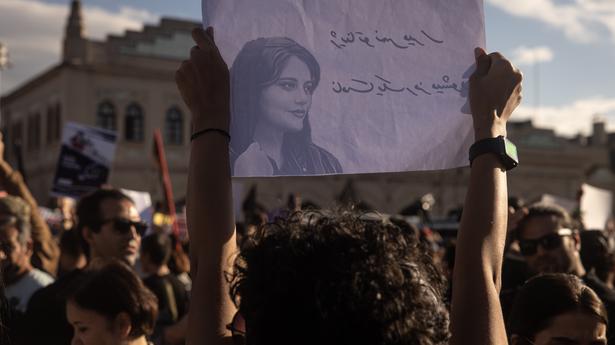
A brief history of rebellions against Iranian regimes
The Hindu
A look back at the number of people killed or detained in anti-government protests
Twenty-one-year-old Mahsa Amini’s detention by the Iranian morality police for violating the mandatory dress code and her subsequent death in custody sparked massive protests across Iran. The police claimed that the cause of Amini’s death was a heart attack from underlying conditions. However, her brother claimed that her screams could be heard from outside the detention centre. Sometime later, an ambulance arrived at the centre, he said. Moreover, a person who came out of the centre informed him that security forces had killed a woman inside, he claimed.
Iranians have been questioning the repressive dress code and calling for the end of the Islamic Republic. In solidarity with the protesters, many women have cut their hair and burned their hijabs in public. The government has resorted to force, with the police using batons and water cannons to disperse demonstrators. While 41 is the official toll in the unrest, Iran Human Rights, a rights organisation, claims 92 people have died in the crackdown. Thousands of civil rights activists have been arrested and at least 20 journalists have been detained, according to the Committee to Protect Journalists.
Protests against ruling regimes are not new to Iran. In fact, the Islamic Republic is a child of the 1977-79 Islamic Revolution, the popular movement that dethroned Shah Mohammed Reza Pahlavi. However, the Government of the Islamic Republic has been accused of being as repressive as the monarchy. In recent times, protests against the regime have been triggered mostly by internal socioeconomic and political conditions.
Data show how Iran’s Human Rights Protection Index between 1950 and 2019 dropped to its lowest after 1979. Though the ranking improved in the 1990s, it has not been able to reach the previous highs. And after 2014, it has been showing a downward trend.
A look at Iran’s Human rights protection index when compared to the other West Asian States
In 1999, students of Tehran University came onto the streets in droves against the government’s closure of Salaam, a reformist newspaper. On July 14, Iran's Supreme Leader, Ali Khamenei, ordered a clampdown, and by July 20, more than 1,400 people were arrested. However, Iran’s Intelligence Ministry soon withdrew the complaint against the newspaper, giving way to the hope that the banned daily would be allowed to resume publication. The government managed to end the agitation after announcing a ban on rallies. This protest, however, became the frame of reference for many more protests that were to follow.
A look at press freedom in Iran compared to other countries with relevant data











